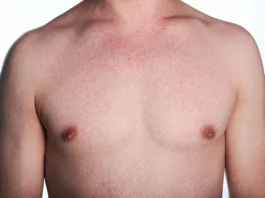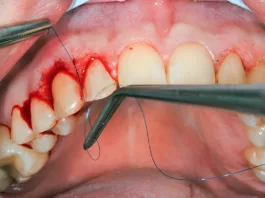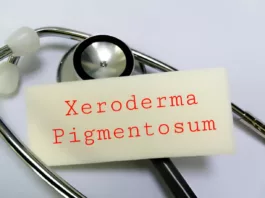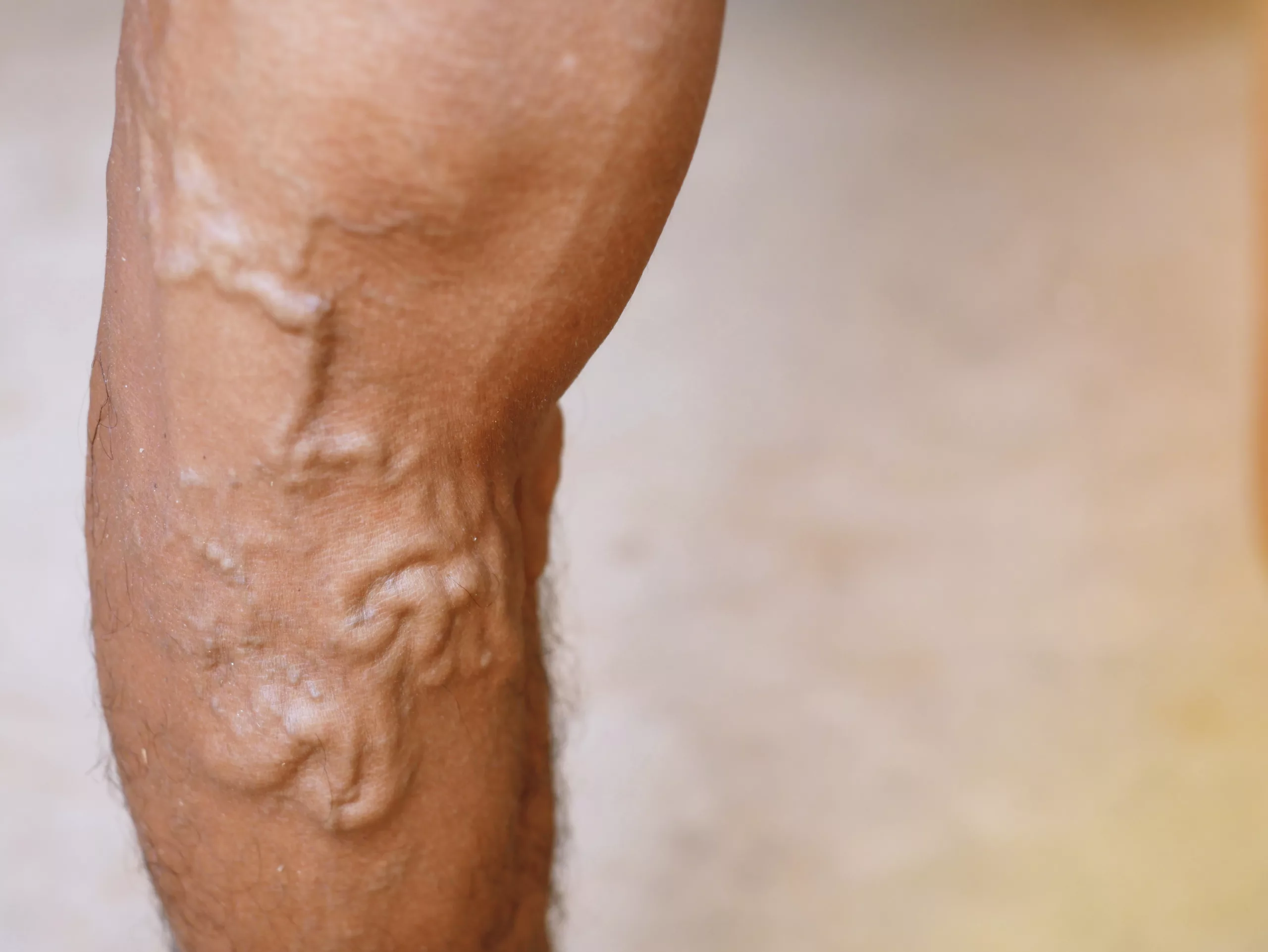
What is Microphlebectomy?
Microbhlebectomy, also known as stab avulsion or ambulatory phlebectomy, is a minimally invasive procedure done to remove large superficial varicose veins from the legs. The surgeon makes multiple small incisions to remove sections of enlarged, tortuous veins segment by segment. It is a minor procedure performed under local anesthesia. Patients may seek microphlebectomy for esthetic or functional purposes (pain and discomfort, etc.). As it is an outpatient procedure, recovery is quick and without any side effects. Patients can resume work on the same day.
Who Is An Ideal Candidate for Microphlebectomy?
Varicose veins are commonly seen in Asian populations.1Aslam, M. R., Muhammad Asif, H., Ahmad, K., Jabbar, S., Hayee, A., Sagheer, M. S., … & Sharif, A. (2022). Global impact and contributing factors in varicose vein disease development. SAGE Open Medicine, 10, 20503121221118992. Microphlebectomy is an effective way of managing the vast majority of patients. However, there are certain requirements for ambulatory phlebectomy. The ideal candidate for microphlebectomy has the following features:
Large Bulging Veins:
The patient has large bulging veins visible to the naked eye. Most patients have tortuous superficial veins.
No Comorbidities:
The patient must not have any underlying diseases such as diabetes, etc.
Healthy Weight:
The candidate must have an ideal weight and not be overweight or obese.
Non-Smoker:
The ideal candidate should be a non-smoker and non-alcoholic.
No Blood Clotting Disorders:
Clotting disorders contra-indicate phlebectomy. If a person is to undergo microphlebectomy, he must not be suffering from any blood dyscrasias (especially clotting disorders).
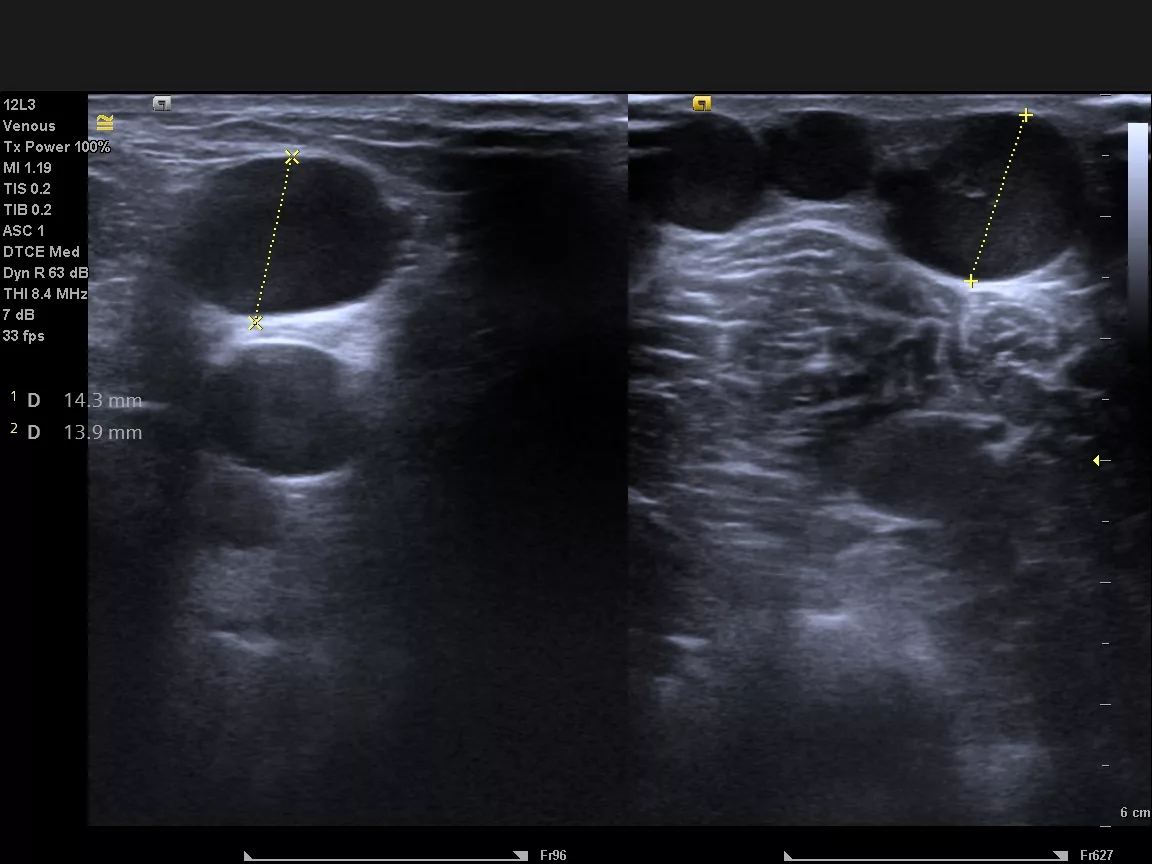
Is Microphlebectomy A Safe Procedure?
Yes, microphlebectomy is a completely safe procedure for varicose veins. The small size of the incisions greatly reduces the risk of infection and other side effects. Therefore, it is one of the safest procedures for spider veins. According to studies, procedures like laser therapy and foam sclerotherapy can be safely combined with microphlebectomy for enlarged superficial truncal veins.2Al Hayazie, S. H., & Hussein, A. M. (2023). Safety and efficacy of endovenous laser therapy with microphlebectomy or foam sclerotherapy for varicose vein patients in outpatient clinic. Journal of Population Therapeutics and Clinical Pharmacology, 30(4), 172-180.
Microphlebectomy Risks & Side Effects
Very rarely do patients experience side effects from microphlebectomy. Complications of the procedure include:
- Swelling
- Pain
- Bruising
- Delayed healing
- Scarring
- Allergic reactions
Microphlebectomy Benefits
Minimally Invasive Procedure
The fact that microphlebectomy does not require big, conventional incisions allows people to prefer the procedure over other modalities. The minuscule cuts have minimal side effects and greater patient acceptance.
Immediate & Long-Lasting Results
In patients with painful varicose veins, ambulatory phlebectomy brings immediate pain relief. The culprit veins vanish while you are at the physician’s clinic i.e., within 1 hour.3Almeida, J. I., & Raines, J. K. (2008). Ambulatory phlebectomy in the office. Perspectives in vascular surgery and endovascular therapy, 20(4), 348-355. Thus, the results of this very procedure are quick and long-lasting. Varicose veins recurrence rates of microphlebectomy are low.4Kim, H. K., Kim, H. J., Shim, J. H., Baek, M. J., Sohn, Y. S., & Choi, Y. H. (2009). Endovenous lasering versus ambulatory phlebectomy of varicose tributaries in conjunction with endovenous laser treatment of the great or small saphenous vein. Annals of vascular surgery, 23(2), 207-211.
Short Recovery Period
You don’t need extensive breaks from work for microphlebectomy. The small superficial cuts heal very soon and the patients can resume daily activities (on the same day) after the procedure.
No Sutures, No Scarring
The greatest benefit of undergoing microphlebectomy is the esthetic outcomes. The tiny slits in the skin do not need sutures to hold. Incisions are covered with small bandages. The precisely punctured skin heals without any scar formation, thereby keeping your skin esthetic and beautiful.
No General Anesthesia
General anesthesia has its risks and complications. The ability to get this procedure done under local anesthesia adds to the safety and acceptability of the operation.
High Patient Satisfaction
Clinical studies reveal overwhelmingly positive responses from patients who have undergone ambulatory phlebectomy.5Hannon, B., Prizeman, G., Madhavan, P., O’Neill, S., Martin, Z., O’Callaghan, A., … & O’Donnell, S. (2022). Ambulatory outpatient venous surgery service: An examination of patient satisfaction and experiences. Phlebology, 37(8), 588-595. Patients are highly likely to recommend this procedure to their friends and family. Therefore, it is concluded that microphlebectomy has high patient satisfaction.
What To Expect During The Microphlebectomy Procedure?
You may need to visit the clinic for pre-op consultation before the start of the operation. During the initial visit, your healthcare provider will take your medical and drug history (and may modify medications as required) and analyze the varicosities.
On the day of the operation, your doctor will start by applying local anesthetic along the course of the vein. He then uses a needle (1 mm) to access the target vein. The surgeon may take help from advanced imaging to visualize the surrounding tissues and minimize surgical trauma.
Your doctor will then make small incisions in the skin (usually less than 1/4 inch in length). The malfunctioning vein is cut and removed through the small perforations. The majority of surgeons use a phlebectomy hook to retrieve the problematic vein. Small adhesive bandages are placed over the wounds and the procedure is complete. The whole procedure is completed in 30 minutes to one hour.
How To Care After The Surgery?
After the minimalist surgery, the body redirects the blood flow of the damaged vein to the surrounding veins (healthy vessels). There is a chance of blood clot formation following phlebectomy. Therefore, doctors recommend wearing compression wraps for a couple of weeks after the operation. Compression stockings effectively prevent clot formation. The use of compression therapy for seven days also imparts pain relief and improves lower limb volume.6Coelho, F., Araújo, W. J. B., Belczak, S., Rui, E. F., Borsato, B. B., Baldesserra, N. F., & Oliveira, R. G. D. (2023). Influence of compression therapy following varicose vein surgery: a prospective randomized study. Jornal Vascular Brasileiro, 22, e20220052. Keep the bandages on for about 48 hours.
Patients are encouraged to continue walking as much as possible. Movement is necessary for redirection of blood flow to healthy veins. Therefore, you must move and avoid staying stationary.
To allow uneventful healing, you should avoid strenuous activities like swimming, etc. for a couple of weeks. You should also avoid hot showers/baths and saunas.
Microphlebectomy Recovery
Stab avulsion healing is quick, thanks to the tiny incisions. Patients can resume normal activities immediately after microphlebectomy. Mild skin pigmentation (that develops after the process) resolves within a few days. Even the incision marks disappear within a few months.
Other Treatment Options For Varicose Veins
Microphlebectomy Vs Sclerotherapy
Sclerotherapy is a highly prevalent, non-invasive procedure to treat spider veins. The simple method involves injecting a chemical (sclerosants such as sodium tetradecyl sulfate, polidocanol, etc.) directly into the vein. The sclerosants seal the vein which stops blood flow. Thus, this eventually leads to the fading away of the vein.7Beneat A, Oropallo A. Sclerotherapy. [Updated 2024 Jan 11]. In: StatPearls [Internet]. Treasure Island (FL): StatPearls Publishing; 2024 Jan-. Available from: https://www.ncbi.nlm.nih.gov/books/NBK599526/
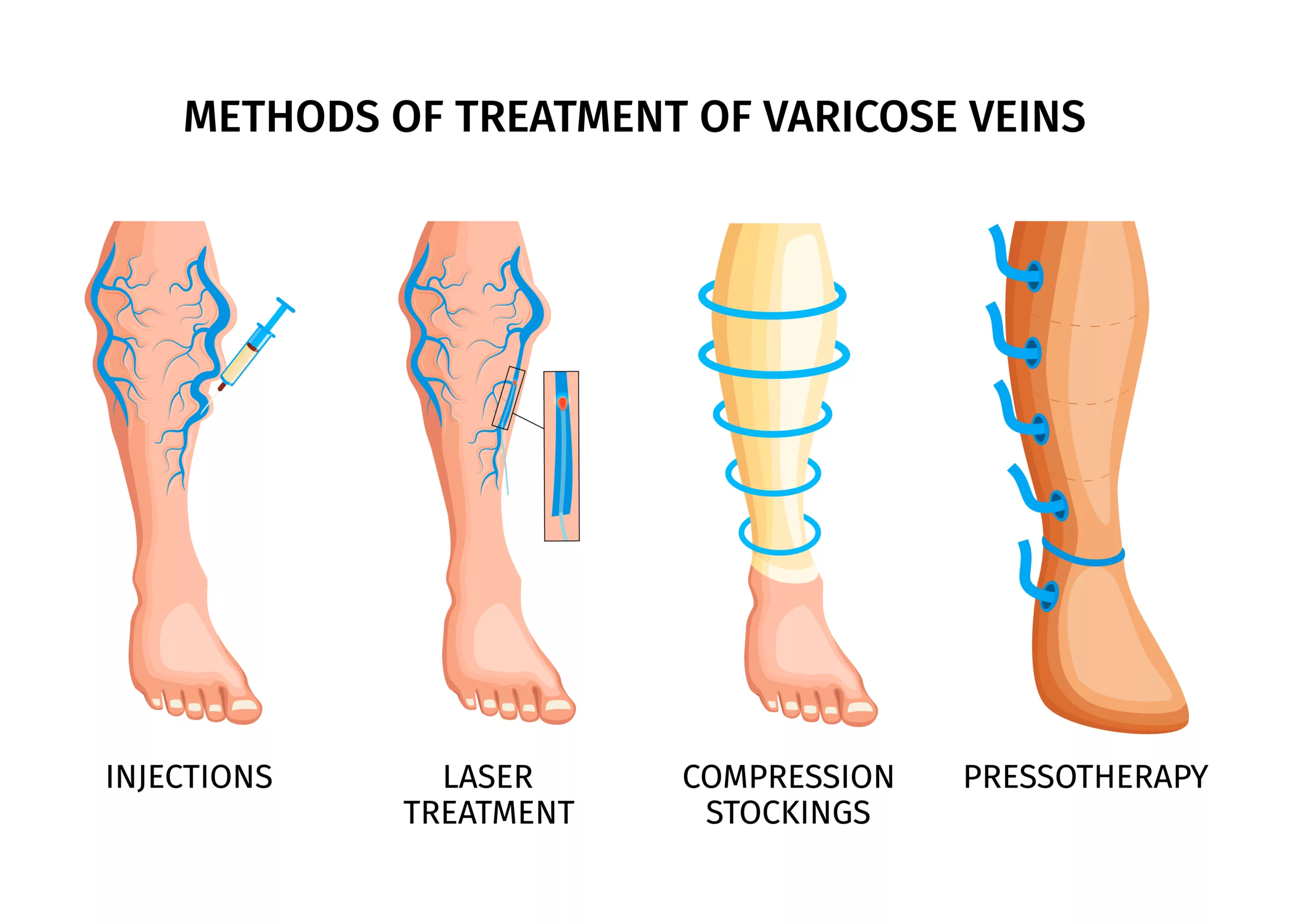
On the other hand, microphlebectomy involves removing sections of the mega-sized veins via tiny incisions. In most cases, microphlebectomy is indicated in patients who can not be treated with sclerotherapy.
Microplebectomy Vs. Vein Stripping
Another procedure closely related to ambulatory phlebectomy is vein stripping. While vein stripping is the conventional way of surgically removing parts of (or the whole of) the vein, microphlebectomy offers an advanced solution with minimal invasion.
Vein stripping is done under general anesthesia and involves removing vein parts via extensive incisions. On the other hand, microphlebectomy is performed under local anesthesia using small cuts. Microphlebectomy is a more feasible treatment option than vein stripping (of the great saphenous vein).8Lakshmi, B., Gowthaman, S., Elamaran, E., Vinoth, S., & Ramanathan, M. (2021). Postoperative outcomes of microphlebectomy and Trendelenburg operation with stripping for saphenofemoral junction incompetence. Formosan Journal of Surgery, 54(3), 97-102.
Microphlebectomy & Radiofrequency Ablation
In some cases, healthcare professionals treat varicose veins with radiofrequency. The saphenous vein is the most commonly affected vessel in varicose vein patients. Ablation seals off the saphenous vein; however, the tributaries need further treatment. In such cases, the doctor removes the remaining branches of the varicosities with microphlebectomy after the radiofrequency ablation.
Final Word
Microphlebectomy is an advanced outpatient procedure to remove varicose veins. The surgeon removes segments of enlarged veins via small incisions under local anesthesia. The precise slit skin cuts don’t need sutures. Thus, there is no scarring and quick healing. The ideal candidate for micro phlebectomy has visible spider veins, is otherwise healthy, and does not smoke/drink. Ambulatory phlebectomy has high patient satisfaction and minimal side effects.
Refrences
- 1Aslam, M. R., Muhammad Asif, H., Ahmad, K., Jabbar, S., Hayee, A., Sagheer, M. S., … & Sharif, A. (2022). Global impact and contributing factors in varicose vein disease development. SAGE Open Medicine, 10, 20503121221118992.
- 2Al Hayazie, S. H., & Hussein, A. M. (2023). Safety and efficacy of endovenous laser therapy with microphlebectomy or foam sclerotherapy for varicose vein patients in outpatient clinic. Journal of Population Therapeutics and Clinical Pharmacology, 30(4), 172-180.
- 3Almeida, J. I., & Raines, J. K. (2008). Ambulatory phlebectomy in the office. Perspectives in vascular surgery and endovascular therapy, 20(4), 348-355.
- 4Kim, H. K., Kim, H. J., Shim, J. H., Baek, M. J., Sohn, Y. S., & Choi, Y. H. (2009). Endovenous lasering versus ambulatory phlebectomy of varicose tributaries in conjunction with endovenous laser treatment of the great or small saphenous vein. Annals of vascular surgery, 23(2), 207-211.
- 5Hannon, B., Prizeman, G., Madhavan, P., O’Neill, S., Martin, Z., O’Callaghan, A., … & O’Donnell, S. (2022). Ambulatory outpatient venous surgery service: An examination of patient satisfaction and experiences. Phlebology, 37(8), 588-595.
- 6Coelho, F., Araújo, W. J. B., Belczak, S., Rui, E. F., Borsato, B. B., Baldesserra, N. F., & Oliveira, R. G. D. (2023). Influence of compression therapy following varicose vein surgery: a prospective randomized study. Jornal Vascular Brasileiro, 22, e20220052.
- 7Beneat A, Oropallo A. Sclerotherapy. [Updated 2024 Jan 11]. In: StatPearls [Internet]. Treasure Island (FL): StatPearls Publishing; 2024 Jan-. Available from: https://www.ncbi.nlm.nih.gov/books/NBK599526/
- 8Lakshmi, B., Gowthaman, S., Elamaran, E., Vinoth, S., & Ramanathan, M. (2021). Postoperative outcomes of microphlebectomy and Trendelenburg operation with stripping for saphenofemoral junction incompetence. Formosan Journal of Surgery, 54(3), 97-102.

